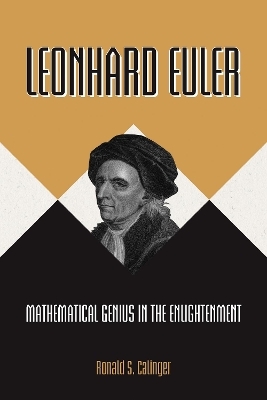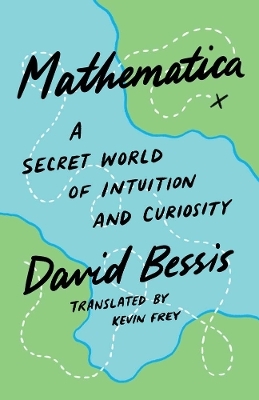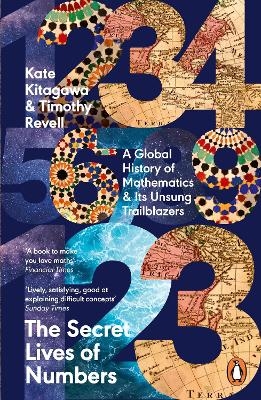
Leonhard Euler
Princeton University Press (Verlag)
978-0-691-11927-4 (ISBN)
- Lieferbar (Termin unbekannt)
- Versandkostenfrei
- Auch auf Rechnung
- Artikel merken
Petersburg, 1727-41, where he gained a European reputation by solving the Basel problem and systematically developing analytical mechanics. Invited to Berlin by Frederick II, Euler published his famous Introductio in analysin infinitorum, devised continuum mechanics, and proposed a pulse theory of light. Returning to St. Petersburg in 1766, he created the analytical calculus of variations, developed the most precise lunar theory of the time that supported Newton's dynamics, and published the best-selling Letters to a German Princess--all despite eye problems that ended in near-total blindness. In telling the remarkable story of Euler and how his achievements brought pan-European distinction to the Petersburg and Berlin academies of sciences, the book also demonstrates with new depth and detail the central role of mathematics in the Enlightenment.
Ronald S. Calinger is professor emeritus of history at the Catholic University of America and the founding chancellor of the Euler Society. His books include A Contextual History of Mathematics, Vita Mathematica, and Classics of Mathematics.
Preface ix Acknowledgments xv Author's Notes xvii Introduction 1 1. The Swiss Years: 1707 to April 1727 4 "Das alte ehrwurdige Basel" (Worthy Old Basel) 4 Lineage and Early Childhood 8 Formal Education in Basel 14 Initial Publications and the Search for a Position 27 2. "Into the Paradise of Scholars": April 1727 to 1730 38 Founding Saint Petersburg and the Imperial Academy of Sciences 40 A Fledgling Camp Divided 53 The Entrance of Euler 65 3. Departures, and Euler in Love: 1730 to 1734 82 Courtship and Marriage 87 Groundwork Research and Massive Computations 90 4. Reaching the "Inmost Heart of Mathematics": 1734 to 1740 113 The Basel Problem and the Mechanica 118 The Konigsberg Bridges and More Foundational Work in Mathematics 130 Scientia navalis, Polemics, and the Prix de Paris 140 Pedagogy and Music Theory 150 Daniel Bernoulli and Family 160 5. Life Becomes Rather Dangerous: 1740 to August 1741 165 Another Paris Prize, a Textbook, and Book Sales 165 Health, Interregnum Dangers, and Prussian Negotiations 169 6. A Call to Berlin: August 1741 to 1744 176 "Ex Oriente Lux": Toward a Frederician Era for the Sciences 176 The Arrival of the Grand Algebraist 185 The New Royal Prussian Academy of Sciences 189 Europe's Mathematician, Whom Others Wished to Emulate 200 Relations with the Petersburg Academy of Sciences 211 7. "The Happiest Man in the World": 1744 to 1746 215 Renovation, Prizes, and Leadership 215 Investigating the Fabric of the Universe 224 Contacts with the Petersburg Academy of Sciences 234 Home, Chess, and the King 237 8. The Apogee Years, I: 1746 to 1748 239 The Start of the New Royal Academy 241 The Monadic Dispute, Court Relations, and Accolades 247 Exceeding the Pillars of Hercules in the MathematicalSciences 255 Academic Clashes in Berlin, and Euler's Correspondence with the Petersburg Academy 279 The Euler Family 282 9. The Apogee Years, II: 1748 to 1750 285 The Introductio and Another Paris Prize 287 Competitions and Disputes 292 Decrial, Tasks, and Printing Scientia navalis 298 A Sensational Retraction and Discord 303 State Projects and the "Vanity of Mathematics" 308 The Konig Visit and Daily Correspondence 313 Family Affairs 316 10. The Apogee Years, III: 1750 to 1753 318 Competitions in Saint Petersburg, Paris, and Berlin 320 Maupertuis's Cosmologie and Selected Research 325 Academic Administration 329 Family Life and Philidor 333 Rivalries: Euler, d'Alembert, and Clairaut 335 The Maupertuis-Konig Affair: The Early Second Phase 337 Two Camps, Problems, and Inventions 344 Botany and Maps 348 The Maupertuis-Konig Affair: The Late Second and Early Third Phases 350 Planetary Perturbations and Mechanics 359 Music, Rameau, and Basel 360 Strife with Voltaire and the Academy Presidency 363 11. Increasing Precision and Generalization in the Mathematical Sciences: 1753 to 1756 368 The Dispute over the Principle of Least Action: The Third Phase 369 Administration and Research at the Berlin Academy 374 The Charlottenburg Estate 384 Wolff, Segner, and Mayer 385 A New Correspondent and Lessons for Students 391 Institutiones calculi differentialis and Fluid Mechanics 395 A New Telescope, the Longitude Prize, Haller, and Lagrange 399 Anleitung zur Nauturlehre and Electricity and Optimism Prizes 401 12. War and Estrangement, 1756 to July 1766 404 The Antebellum Period 404 Into the Great War and Beyond 409 Losses, Lessons, and Leadership 415 Rigid-Body Disks, Lambert, and Better Optical Instruments 427 The Presidency of the Berlin Academy 430 What Soon Happened, and Denouement 432 13. Return to Saint Petersburg: Academy Reform and Great Productivity, July 1766 to 1773 451 Restoring the Academy: First Efforts 452 The Grand Geometer: A More Splendid Oeuvre 456 A Further Research Corpus: Relentless Ingenuity 471 The Kulibin Bridge, the Great Fire, and One Fewer Distraction 485 Persistent Objectives: To Perfect, to Create, and to Order 488 14. Vigorous Autumnal Years: 1773 to 1782 495 The Euler Circle 496 Elements of Number Theory and Second Ship Theory 497 The Diderot Story and Katharina's Death 499 The Imperial Academy: Projects and Library 502 The Russian Navy, Turgot's Request, and a Successor 504 At the Academy: Technical Matters and a New Director 506 A Second Marriage and Rapprochement with Frederick II 509 End of Correspondence and Exit from the Academy 515 Mapmaking and Prime Numbers 517 A Notable Visit and Portrait 518 Magic Squares and Another Honor 520 15. Toward "a More Perfect State of Dreaming": 1782 to October 1783 526 The Inauguration of Princess Dashkova 526 1783 Articles 529 Final Days 530 Major Eulogies and an Epilogue 532 Notes 537 General Bibliography of Works Consulted 571 Register of Principal Names 625 General Index 657
| Zusatzinfo | 55 halftones. |
|---|---|
| Verlagsort | New Jersey |
| Sprache | englisch |
| Maße | 152 x 235 mm |
| Gewicht | 1247 g |
| Themenwelt | Literatur ► Biografien / Erfahrungsberichte |
| Sachbuch/Ratgeber ► Natur / Technik | |
| Mathematik / Informatik ► Mathematik ► Geschichte der Mathematik | |
| ISBN-10 | 0-691-11927-9 / 0691119279 |
| ISBN-13 | 978-0-691-11927-4 / 9780691119274 |
| Zustand | Neuware |
| Haben Sie eine Frage zum Produkt? |
aus dem Bereich


